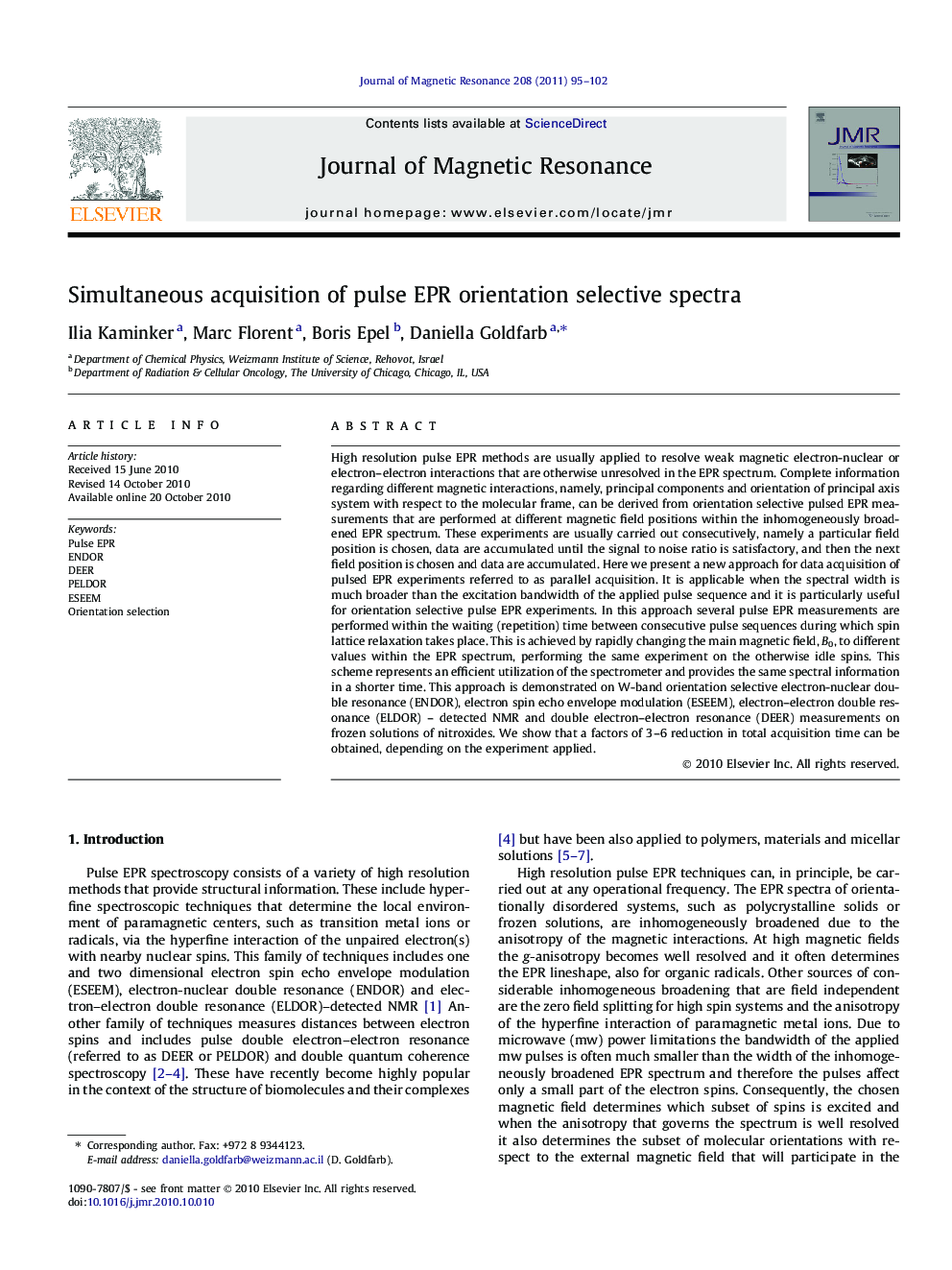| Article ID | Journal | Published Year | Pages | File Type |
|---|---|---|---|---|
| 5406410 | Journal of Magnetic Resonance | 2011 | 8 Pages |
Abstract
High resolution pulse EPR methods are usually applied to resolve weak magnetic electron-nuclear or electron-electron interactions that are otherwise unresolved in the EPR spectrum. Complete information regarding different magnetic interactions, namely, principal components and orientation of principal axis system with respect to the molecular frame, can be derived from orientation selective pulsed EPR measurements that are performed at different magnetic field positions within the inhomogeneously broadened EPR spectrum. These experiments are usually carried out consecutively, namely a particular field position is chosen, data are accumulated until the signal to noise ratio is satisfactory, and then the next field position is chosen and data are accumulated. Here we present a new approach for data acquisition of pulsed EPR experiments referred to as parallel acquisition. It is applicable when the spectral width is much broader than the excitation bandwidth of the applied pulse sequence and it is particularly useful for orientation selective pulse EPR experiments. In this approach several pulse EPR measurements are performed within the waiting (repetition) time between consecutive pulse sequences during which spin lattice relaxation takes place. This is achieved by rapidly changing the main magnetic field, B0, to different values within the EPR spectrum, performing the same experiment on the otherwise idle spins. This scheme represents an efficient utilization of the spectrometer and provides the same spectral information in a shorter time. This approach is demonstrated on W-band orientation selective electron-nuclear double resonance (ENDOR), electron spin echo envelope modulation (ESEEM), electron-electron double resonance (ELDOR) - detected NMR and double electron-electron resonance (DEER) measurements on frozen solutions of nitroxides. We show that a factors of 3-6 reduction in total acquisition time can be obtained, depending on the experiment applied.
Related Topics
Physical Sciences and Engineering
Chemistry
Physical and Theoretical Chemistry
Authors
Ilia Kaminker, Marc Florent, Boris Epel, Daniella Goldfarb,
